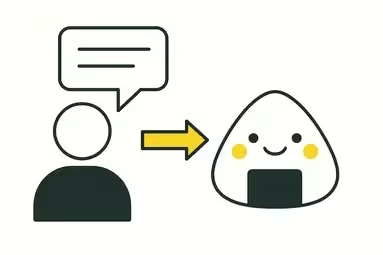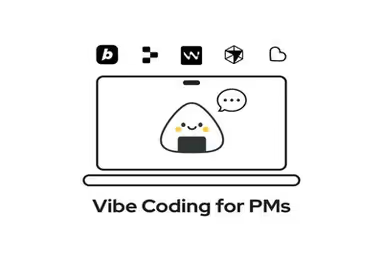.webp)
How Interim Product Management Shapes Skills Faster Than In-House Roles
Be a standout product management consultant: master influence without authority, rapid onboarding, and stakeholder alignment. Playbooks + links inside.

Product Management Consultant: How Interim PMs Sharpen Their Craft Faster
Being a product management consultant isn’t just stepping in as an interim product manager—it’s compressing years of learning into months. You’re hired to deliver impact quickly, often with fewer resources and almost no onboarding runway. The upside? You learn faster, earn trust sooner, and build durable skills you’ll use everywhere. Below is a practical, link-rich guide to owning the role, with playbooks, internal resources, and external reading to deepen your craft.
The Final Form of Influencing Without Authority
Every product manager needs to influence without authority. But as a product management consultant, you operate at the final form of this skill. You’re an external, often joining a company with little prior context, yet you still need to rally teams, earn trust, and drive alignment. This means you learn how to read a room, understand stakeholder priorities, and build credibility at lightning speed. The ability to influence without a title or long-term history becomes second nature, and that’s a skill that transfers everywhere.
For deeper tactics, this HBS primer breaks down specific levers—credibility, reciprocity, and coalition building—that work even without a formal title.
And for PM-specific nuance, this Mind the Product talk shares “5Cs” of influence tailored to cross-functional teams.
Onboarding to New Domains at Light Speed
Time is always limited when you join as an interim PM. You can’t afford a “slow ramp-up.” Whether it’s fintech, e-commerce, legal tech, or AI, you’re expected to contribute value almost immediately. That forces you to develop extreme adaptability, resilience, and learning velocity. You master the art of asking the right questions, absorbing domain knowledge quickly, and applying product management fundamentals across contexts. This makes you not only a fast learner, but also someone who can connect dots across industries.
In consulting, you can’t afford a three-month ramp. Your playbook should include:
- Day 0–2: “Pain map” interviews with sales, support, and 3–5 customers
- Day 3–5: Instrumentation check (do we track activation, retention, value moments?)
- Day 6–10: First measurable win (e.g., unblock a dependency, clarify a decision log, fix the onboarding funnel)
For inspiration, First Round’s deep dive into high-touch onboarding (from Superhuman’s architect) underscores what “obsessive onboarding” looks like at scale.
Internal resources:
- How we add value fast: Onboarding: How to Add Value in 2 Weeks (templates + checklists).
- Hiring or covering the gap: Hire a Product Manager — A Friendly Guide.
Multitasking at a Higher Level (and Surviving Context Switching)
Yes, in-house product managers multitask, too. But as product management consultants, you need to do all of that plus more. While you’re handling discovery, delivery, and stakeholder management for your client, you're also juggling responsibilities for the company that employs you, like supporting business development, contributing to knowledge sharing, and mentoring peers. It’s like playing product management on “hard mode,” and the result is sharper prioritization, time management, and context-switching skills.
Consultants juggle client delivery, discovery, GTM alignment, and internal duties (BD, mentoring, playbooks). Context switching can nuke throughput if unmanaged. Research on multi-teaming and task switching shows how switching raises temporal misalignment and reduces productivity if you lack clear boundaries and rhythms. Build buffers and clarify decision rights.
Practical cadence
- Daily: personal WIP cap (3 items max), 2 focus blocks, 1 comms block
- Weekly: risk register review; one “demo the delta” session to show progress
- Monthly: strategy review on leading indicators, not vanity metrics
Exposure to Diverse Practices and Cultures
One hidden advantage of interim product management: you get to see how different companies run their product organizations. You experience a variety of processes, tools, leadership styles, and cultures. This helps you quickly learn what works and what doesn’t. This exposure gives you a broad perspective that many in-house PMs don’t get, and it lets you bring best practices from one client to another.
You’ll watch how different orgs do roadmaps, discovery, and stakeholder management—and you’ll port the winning patterns. To accelerate alignment in any environment, keep a visible decision log and a published stakeholder map with RACI/RAPID accounts.
For a friendly refresher on stakeholder fundamentals and pitfalls, Atlassian’s guide is a handy reference you can share with teams new to structured collaboration.
Internal resources:
- A crisp explainer teams love: Product Manager vs. Project Manager — The Strategic Difference.
- Cross-functional partnership: How PM–PMM Drives Success.
Building Confidence Through Constant Change
Change is the only constant in product management consulting: new teams, new industries, new challenges. While it can feel uncomfortable at first, it builds resilience and confidence. You start trusting yourself to land on your feet, no matter the situation. Over time, this confidence will shape you into a product leader who is comfortable navigating uncertainty.
Every new engagement is a micro-reset: new domain, new team, new constraints. The payoff is resilience and executive presence: you become the person who brings calm to ambiguity. If your client is hybrid or distributed, MIT Sloan’s research highlights the productively nuanced reality of modern work—use it to set expectations on cadence and communication norms from day one.
A Simple Product Discovery Framework You Can Reuse
Interim PMs win by installing lightweight, repeatable systems. This product discovery framework keeps you credible and quick:
- Insight (10–14 days)
- 8–12 interviews across customers/prospects; mine support tickets and win/loss notes
- Quantify the “cost of status quo” and define the activation moment
- Draft problem statements (job, context, constraint)
- Choice (3–5 days)
- Select a single beachhead segment; write exclusion criteria
- Prioritize 1–2 bets and explicitly list what you won’t do yet
- Design (1 sprint)
- Define value metrics and guardrails; outline success/failure signals
- Prep the experiment plan; identify GTM partners early
- Delivery (ongoing)
- Weekly “demo the delta”—show the smallest possible proof of value
- Keep a public decision log; notify owners within 24 hours
Conclusion
When you operate as a product management consultant, you accelerate mastery: influence without authority, rapid onboarding, smart stakeholder management, and disciplined execution rhythms. Pair those with a lightweight product discovery framework and a public decision log, and you’ll consistently ship outcomes—even in high-ambiguity environments. That’s the superpower of the interim product manager: impact without the long runway.
FAQ
A consultant scopes problems, aligns stakeholders, installs an execution cadence, and ships measurable outcomes. In interim roles, they also cover core PM responsibilities (discovery, delivery, and enablement) while building systems the team can keep after the engagement.
Interim PMs optimize for speed to impact and transferable systems (decision logs, dashboards, enablement). In-house PMs go deeper on long-term org shaping and platform bets.
Start with trust-building micro-wins, map power dynamics, and pre-align decisions before meetings. HBS’s practical guide outlines specific techniques you can adopt this week.
Run a 10-day discovery sprint (interviews + analytics), write a one-page strategy with explicit trade-offs, and ship a “demo the delta” win in week two. For deeper onboarding tactics, review the Superhuman playbook on First Round.
Read More Posts
.webp)
How to Evaluate Pricing Approach Success
.webp)
Product Manager vs. Product Owner vs. Project Manager

Customer Interview Techniques for Better Product Decisions

How to Add Value in 2 Weeks: From Our Experience as Interim Product Managers

Introduction to Vibe Coding for Product Managers: From Idea to MVP



